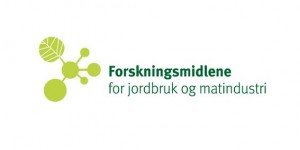Tillväxtpotentialer i den norska och svenska hästsektorn ur ett nationellt och regionalt perspektiv
- Status Avslutat
- Beviljade medel 1 500 000
- Projektnummer H0947227
- Ansökningsår 2009
- Slutrapport 20 juni 2014
- Organisation Norsk institutt for landbruksøkonomisk forsking
- Huvudsökande Leif Jarle Asheim
- E-postadress leif-jarle.asheim@nilf.no
- Telefon +47 22367225
Sammanfattning av slutrapport
The purpose of the research project is to analyse the factors for profitability and success that could lead to a sustainable and continued growth of the horse industry in Norway and Sweden. This has been achieved through a multiple-faceted empirical investigation. Empirical analysis conducted on samples of trotters and horse-boarding farms in Sweden indicates that they seem to be on average technically inefficient. A hedonic model explaining the prices of horse boarding and estimated for both countries provide satisfactory results. A similar model has been estimated to explain the price of riding lessons in Sweden. An econometric model on the determinants of gambling expenditures (including horse betting) by Swedish households has been estimated. An input-output analysis has been conducted at the regional and national levels to assess the multiplier effects of horse-related activities. Finally foresight scenarios on the future of the horse industry in Norway and Sweden were conducted.
Populärvetenskaplig sammanfattning
The purpose of this research project is to identify the critical and common factors for profitability and success, which will be important for a sustainable and continued growth of the industry in both countries. The following four research areas and associated work packages make up this research project: 1) Critical factors for successful development of horse activities at farm level; 2) Market analysis of the demand for horse-related recreational activities and equine services; 3) Economic impacts of equine sectors at national and regional levels using input-output-analysis, and 4) The future of the horse industry in society.
The first area of this research project was investigated by analyzing first the technical efficiency of trotters and farms involved in horse boarding. Empirical results obtained for Sweden indicate that these two categories of firms are on average not the most technically efficient. The second empirical work aimed at analyzing the performance of horse activities at the farm level was to study the determinants of the prices of horse boarding in Norway and Sweden. A regression model based on 14 explanatory variables was selected to explain the price of horse boarding in Norway and Sweden. Overall, the explanatory power of the model is satisfactory. 9 explanatory variables out of 14 are statistically significant at a 10% level. The variable defining nearest horse boarding facilities is significant and has a negative impact on the price of horse boarding. Horse boarding capacity, the share of grazing land, agricultural activity on the farm and receiving subsidies, albeit having in most cases the expected effects on the price of horse boarding, are not statistically significant.
An important component of this research project focuses on various forms of demand related to equine services and the factors motivating and influencing individuals to be involved in such recreational activities. Horse-related activities are wide ranging, including various facets such as recreational needs by consumers (such as equestrian trail-riding) and other types of services (horse betting, etc.). Aggregate models linking the (per capita) number of horses (as measured by FAO) to relevant explanatory variables including macroeconomic variables such as real per capita GNP and the level of education are performed for a panel data of OECD for the period 1980-2010. Although econometric results provide for 2010 reasonable estimates of elasticities with respect to real GDP which are in most cases gravitate around 0.8, they must be interpreted with caution given the numerous questions pertaining to the quality and reliability of FAO data on horse population.
The second type of econometric demand studies on horse-related activities is to use micro levels data based on household, riding-schools and farms with horse-related activities. An essential component of the demand for horse-related activities is associated with horse betting or gambling by households in Norway and Sweden. Because there are no micro-data available on expenditures of each type of gambling expenditures, an empirical exercise has been conducted by estimating the relationship between demand for Swedish gambling, income and the other socioeconomic variables using empirical models of participation and gambling expenditure. Econometric results show that estimates of the income elasticities of the demand for gambling by households are below one and do not vary widely among different classes of households ranked by income levels. This latter empirical finding implies that implicit Swedish gaming taxes are regressive.
Using the country-wide survey of riding schools in Sweden, an analysis of the market for riding lessons is undertaken with the additional objective of determining how various subsidies interfere with this market. It is found that profitable riding schools mainly exist in peri-urban areas and depend heavily on the willingness of customers to commute. A positive relationship between average household income in the nearby town/city and the price of a riding lesson is also identified. However, most riding schools in the sample received financial support from national and European sources.
Selected results derived from the input-output analysis indicate that the highest output multipliers for equine activities are to be found for riding schools and breeders. The reason for such high multipliers can be that these enterprises (often in the form of a hobby activity) are not making any profits and all the revenue is used for purchasing inputs to the activities and hence spent in the supply chains. Activities needing to allocate some revenue to returns to capital and wages show somewhat lower multipliers, mainly boarding enterprises and professional trainers. For the national IO models we find open multipliers for the horse sectors ranging between 1.4 and 2.2. Concerning regional results it is evident that multipliers are high is such regions where the surrounding economy can support horse-related enterprises and activities and provide for feed, equipment and transport services
The equine industry offers some unique features in the sense that it is offering a multitude of recreational services for the individuals and at the same time it consumes resources such as arable land. Present and previous analyses (conducted in France and Sweden) indicated that developments in the horse industry are affected by a complex set of factors that are not likely to remain constant over time. Furthermore, the future development of equine industry is likely sensitive to developments in the macroeconomic environment. The equine industry may be quite vulnerable to an economic down-turn and a changing complexity of the interactions between urban and rural areas. The projections made with the macro econometric models developed in this project reveal that the Norwegian horse industry is quite resilient to economic shocks of the magnitude experienced during the aftermath of the 2008 financial crisis. The Swedish horse industry does not reveal equally resilient features. Forecasts considering the presence of a statistically significant negative time trend imply a decline of about 5.3% per year, everything else equal. However, there are serious questions to what extent this estimate is affected by data problems that are much more severe compared to France and Norway.
As the expected population growth is stronger in urban than rural areas, and also income per capital tends to grow strongest in and close to be biggest cities, the horse sector also could be expected to have higher growth in urban than rural areas. This might be strengthened by a tendency towards an aging rural population while the urban areas have relative more young people. On the other hand, competition for available land might be strongest in urban areas. The cost of stabling horses and for disposing of manure might also be higher in urban areas. Another question that may be extremely important is how well the horse industries in Norway and Sweden will be able to compete in the future in terms of financial resources as well as for available leisure time among its prospective proponents/consumers. The latter issue lends itself well for future research using a multitude of scientific approaches.
The results and the scenario analysis were presented for discussion at a meeting of the reference group including representatives of the equine sector in both countries. Results of the project were presented at a special session on horse research at the annual EAAP Conference (Nantes, August 2013). Scenario analysis on the future of the horse industry in both countries will be presented at the 3rd Nordic Rural Research Conference, Trondheim, September 2014. Several scientific papers t have been written and are under review for publication. Furthermore, two chapters will be part of a book to be published soon.













